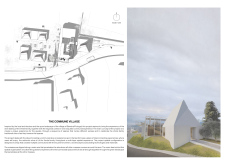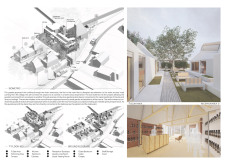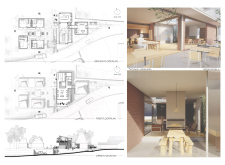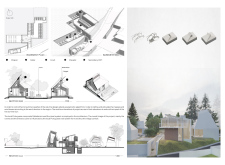5 key facts about this project
## Project Overview
Located in Barreiros, Portugal, "The Commune Village" is designed as a communal hub for olive oil experiences, blending local cultural elements with contemporary architectural practices. This initiative emphasizes the sensory engagement of visitors through a tailored journey of tasting and exploration, highlighting the rich heritage of the Verde family while adhering to modern design standards. The layout is organized around a central axis that guides guests through distinct zones, including olive tree gardens and communal areas.
## Spatial Strategy
### Site Planning
The architectural configuration features multiple structures along a cohesive main axis, promoting interaction among visitors while harmonizing with the surrounding landscape. Each component serves a specific function—guest accommodations, communal dining spaces, tasting rooms, and spiritual areas—connected by landscaped pathways. This arrangement not only facilitates movement but also fosters a sense of community engagement throughout the site.
### Entrances and Circulation
Two primary entrances are integrated into the design to enhance accessibility and blend with the natural environment. The main entrance aligns with the access road, facilitating a smooth transition from the village to the site. In contrast, the secondary entrance opens into a courtyard, directing visitors immediately to the tasting room and enriching their communal experience.
## Materiality and Sustainability
The project champions local materials, establishing a site-specific architecture that resonates with the area's cultural and environmental context. Local stone is used for foundational elements, providing durability and an organic connection to the landscape. Wood features prominently in roofing and internal structures, offering warmth and intimacy, while glass facades allow for ample natural light and views of the surrounding olive groves. Brick accents not only address aesthetic considerations but also reinforce structural integrity, aligning with traditional Portuguese design. This focus on locally sourced materials underscores a commitment to sustainability and ecological responsibility.






















































